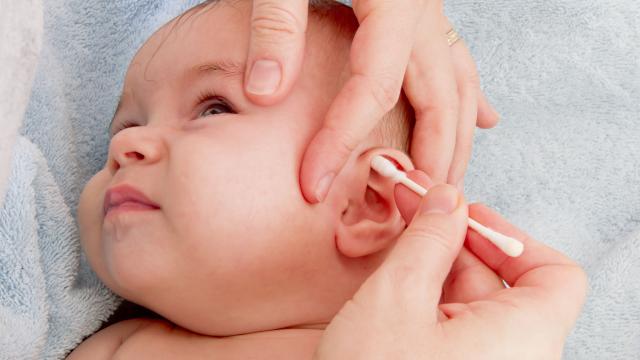
Pneumonia is a general term for infection of the lungs, and it can be caused by many different organisms.
Babies and young children may get pneumonia from respiratory syncytial virus (RSV), for example, and infants may get it from group B streptococcus (GBS) acquired at birth, during delivery. An older baby or child might develop pneumonia as the result of other bacterial or viral infections.
Doctors group pneumonia into two categories: bacterial and viral.
Children with bacterial pneumonia usually have sudden symptoms – high fever, rapid breathing, and coughing. They don’t want to eat and seem very ill.
They may have trouble breathing (look for flaring nostrils or chest sinking in as they breathe), a faster pulse, and bluish lips or nails. They may seem weak, vomit, or have diarrhea. Less common symptoms include abdominal pain and a stiff neck.
Streptococcus pneumoniae is the usual cause, but other bacteria (such as Staphylococcus aureus or Mycoplasma pneumoniae) can cause pneumonia, too.
Viral pneumonia typically starts out like a cold, but symptoms slowly and steadily get worse. Children may have a fever of 101.5 degrees Fahrenheit or more, with a worsening cough, wheezing, and rapid breathing. Weakness, vomiting, or diarrhea can also be a symptom.
Viral pneumonia is usually less severe than bacterial and can’t progress into it – but it can make kids more susceptible to the bacterial form of the illness. Viruses behind pneumonia include respiratory syncytial virus (RSV), parainfluenza virus, adenovirus, and the flu virus.
How is pneumonia diagnosed?
During an office exam, the doctor watches how the child breathes and listens to her lungs with a stethoscope. He listens for diminished breathing sounds or other abnormal noise. Because some of the air sacs in the lungs are filled with fluid in a child with pneumonia, she’ll be breathing rapidly to take in more oxygen.
If the doctor thinks your child has pneumonia, he may order a chest X-ray, blood work, or a test of the fluid from your child’s nose. To make sure your child is getting enough oxygen, he may use a pulse oximeter, a simple device that clips on to a finger to measure oxygen saturation.
What’s the treatment?
For bacterial pneumonia, doctors prescribe antibiotics. Viral pneumonia doesn’t respond to antibiotics, so treatment may be limited to rest and fluids. In fact, getting enough fluids is vital to fight the dehydration from rapid breathing and fever that’s often a side effect of pneumonia.
If your child has bacterial pneumonia, you may want to try running a cool mist humidifier. If she’s feverish and uncomfortable, you may want to give her the proper dose of acetaminophen or (if she’s 6 months or older) ibuprofen.
If your child needs pediatric care and get treated for bacterial pneumonia in a walk in clinic, she may be given fluids and antibiotics through an IV. The nurses may suction her nose regularly and keep an eye on her blood oxygen levels with an oximeter. She may also be fitted with a nasal oxygen tube or mask to make breathing easier.
Most uncomplicated pneumonia gets better within a week, although the cough can last for weeks.
To boost your child’s chance of staying pneumonia-free:
Keep vaccinations up to date. The Hib, DTaP, MMR, flu (for children at least 6 months old), chicken pox, and pneumococcal vaccines can all help prevent pneumonia. Ask the doctor for advice if your child has missed any shots. See our complete article on recommended vaccinations.
Practice good personal hygiene. Wash your hands and your child’s hands often to prevent the spread of germs. Don’t let your child share cups or utensils. Regularly wash all the places germy body parts might touch, like the phone, toys, doorknobs, and the refrigerator door handle.
Make yours a smoke-free home. If you or your partner smokes, do it outside and ask guests to do the same. Better yet, ask your doctor about finding a program to help you quit. Studies have shown that children who live around cigarette smoke, even for short periods, get sick more often and are more susceptible to pneumonia, upper respiratory infections, asthma, and ear infections.
Source :-BabyCenter

Leave a Reply